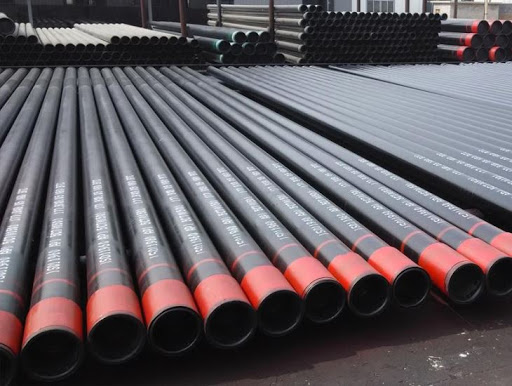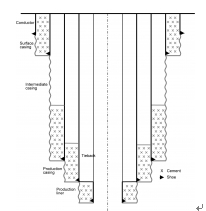tubing and casing strings are the main parts of the well construction. all wells drilled for the purpose of oil or gas production (or injecting materials into underground formations) must be cased with material with sufficient strength and functionality. tubing and casing are key portions of octg. tubing is a distinct pipe, installed in production casing after well cementing to allow the oil and gases flow to the ground. casings are those pipes supporting the wall of oil and gas well. it is mainly divided in 3 major categories- the surface, protection and production casing.

tubing
tubing is the conduit through which oil and gas are brought from the producing formations to the field surface facilities for processing. tubing must be adequately strong to resist loads and deformations associated with production and workovers. further, tubing must be sized to support the expected rates of production of oil and gas. clearly, tubing that is too small restricts production and subsequent economic performance of the well. tubing that is too large, however, may have an economic impact beyond the cost of the tubing string itself, because the tubing size will influence the overall casing design of the well.
casing
casing is the major structural component of a well. casing is needed to:
maintain borehole stability
prevent contamination of water sands
isolate water from producing formations
control well pressures during drilling, production, and workover operations
casing provides locations for the installation of:
blowout preventers
wellhead equipment
production packers
production tubing
the cost of casing is a major part of the overall well cost, so selection of casing size, grade, connectors, and setting depth is a primary engineering and economic consideration.
casing strings
there are five basic types of casing strings:
conductor casing
surface casing
intermediate casing
production casing
liner
conductor casing
conductor casing is the first string set below the structural casing (i.e., drive pipe or marine conductor run to protect loose near-surface formations and to enable circulation of drilling fluid). the conductor isolates unconsolidated formations and water sands and protects against shallow gas. this is usually the string onto which the casing head is installed. a diverter or a blowout prevention (bop) stack may be installed onto this string. when cemented, this string is typically cemented to the surface or to the mudline in offshore wells.
surface casing
surface casing is set to provide blowout protection, isolate water sands, and prevent lost circulation. it also often provides adequate shoe strength to drill into high-pressure transition zones. in deviated wells, the surface casing may cover the build section to prevent keyseating of the formation during deeper drilling. this string is typically cemented to the surface or to the mudline in offshore wells.
intermediate casing
intermediate casing is set to isolate:
unstable hole sections
lost-circulation zones
low-pressure zones
production zones
it is often set in the transition zone from normal to abnormal pressure. the casing cement top must isolate any hydrocarbon zones. some wells require multiple intermediate strings. some intermediate strings may also be production strings if a liner is run beneath them.
production casing
production casing is used to isolate production zones and contain formation pressures in the event of a tubing leak. it may also be exposed to:
injection pressures from fracture jobs
downcasing, gas lift
the injection of inhibitor oil
a good primary cement job is very critical for this string.
liner
liner is a casing string that does not extend back to the wellhead, but is hung from another casing string. liners are used instead of full casing strings to:
reduce cost
improve hydraulic performance when drilling deeper
allow the use of larger tubing above the liner top
not represent a tension limitation for a rig
liners can be either an intermediate or a production string. liners are typically cemented over their entire length.
tieback string
tieback string is a casing string that provides additional pressure integrity from the liner top to the wellhead. an intermediate tieback is used to isolate a casing string that cannot withstand possible pressure loads if drilling is continued (usually because of excessive wear or higher than anticipated pressures). similarly, a production tieback isolates an intermediate string from production loads. tiebacks can be uncemented or partially cemented. an example of a typical casing program that illustrates each of the specified casing string types is shown in below.

properties of tubing and casing
the american petroleum inst. (api) has formed standards for oil/gas casing that are accepted in most countries by oil and service companies. casing is classified according to five properties:
the manner of manufacture
steel grade
type of joints
length range
the wall thickness (unit weight)
almost without exception, casing is manufactured of mild (0.3 carbon) steel, normalized with small amounts of manganese. strength can also be increased with quenching and tempering. api has adopted a casing "grade" designation to define the strength of casing steels. this designation consists of a grade letter followed by a number, which designates the minimum yield strength of the steel in ksi (103 psi).
